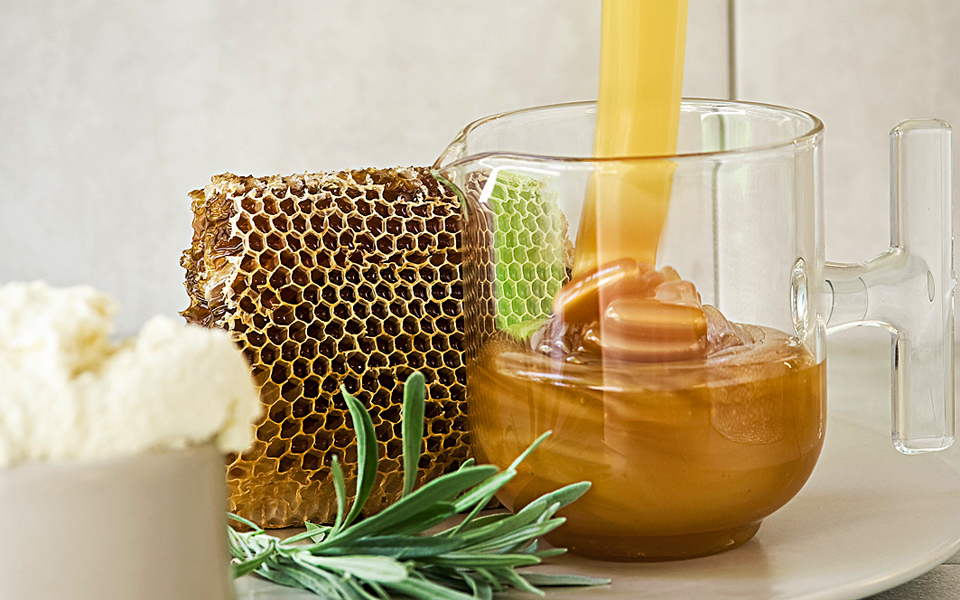MAINALO FIR HONEY
Blond Nectar
The highest mountain range in Arcadia is home to a rare species of fir tree whose leaves are so dark they appear black. It is from the honeydew (resin) of this tree that bees produce Mainalo Vanilla Fir Honey, the only honey in Greece with PDO status. Light in color, thick and with a very distinctive flavor, it is also rich in nutrients such as potassium, magnesium, iron and phosphorus. However, because the hive must be destroyed in order to extract the honey, only a few beekeepers are engaged in its production, making it both hard to find and relatively expensive.
FETA
All-time Classic
In some parts of Greece, such as Thessaly, feta is generally soft and mild in flavor, while elsewhere, Roumeli and Epirus in particular, it is hard and spicy. In the Peloponnese, one can savor the best of both worlds, for here, two PDO fetas are produced; one soft and buttery and the other semi-hard and tangy. Both are made with sheep’s milk or a 70-30 percent mixture of sheep’s and goat’s milk. The harder type is usually preferred in pies, “Greek” salad or as a side dish with a sprinkling of olive oil, while the softer variety is used mainly in dips and sauces.
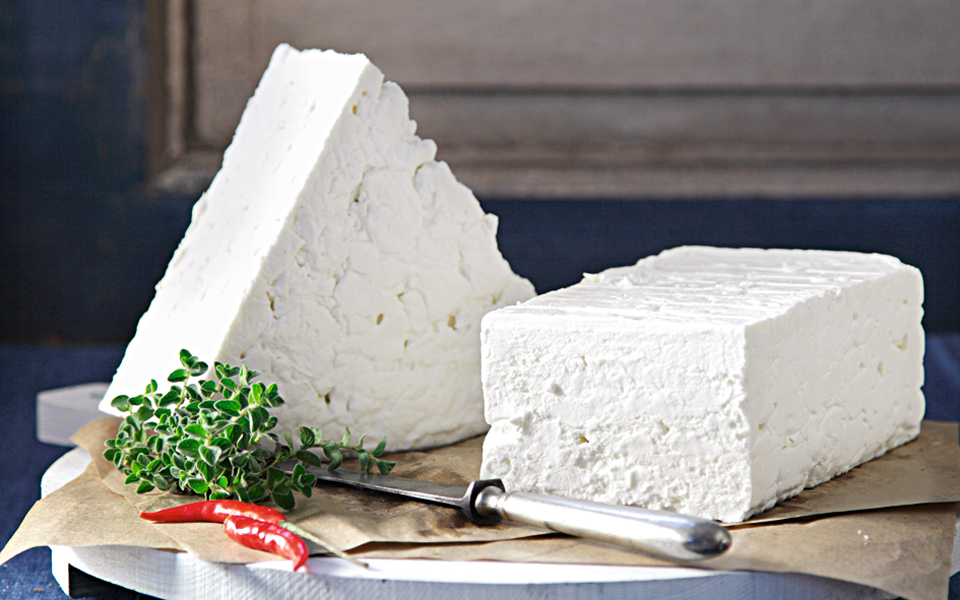
© Giorgos Drakopoulos
TRIPOLI APPLES
Heavenly Temptation
A relatively poor region, Arcadia was depopulated by successive waves of emigration. However, some emigrants had second thoughts, among them Ilias Pilafas, who returned to his homeland from the United States in the early 20th century and brought with him seeds of the Golden Russet, mixing the cultivar with indigenous varieties. Pilafa Apples come exclusively from Tripoli and are PDO certified. With a yellow-green and red skin, white flesh and wonderful aroma, the apples are not only delicious but also rich in antioxidants that help lower bad cholesterol.
SFELA
The Fire Cheese
Made only in Messinia, using either 100 percent sheep’s milk or a 70-30 percent mixture of sheep’s and goat’s milk, much like feta, but here the curd is reheated, earning sfela the nickname “fire cheese.” Its official name is derived from the way it is cut (sfela meaning strip in the local dialect) after being drained in cloth and before maturing in brine for at least three months. Slightly off-white, semi-hard and salty with a tangy kick, sfela can be enjoyed fresh in salad or on a piece of bread, but it is also excellent when fried in a breadcrumb crust.
“ Ilias Pilafas, who returned to Tripoli from the United States in the early 20th century, brought with him seeds of the Golden Russet, mixing the cultivar with indigenous varieties. “
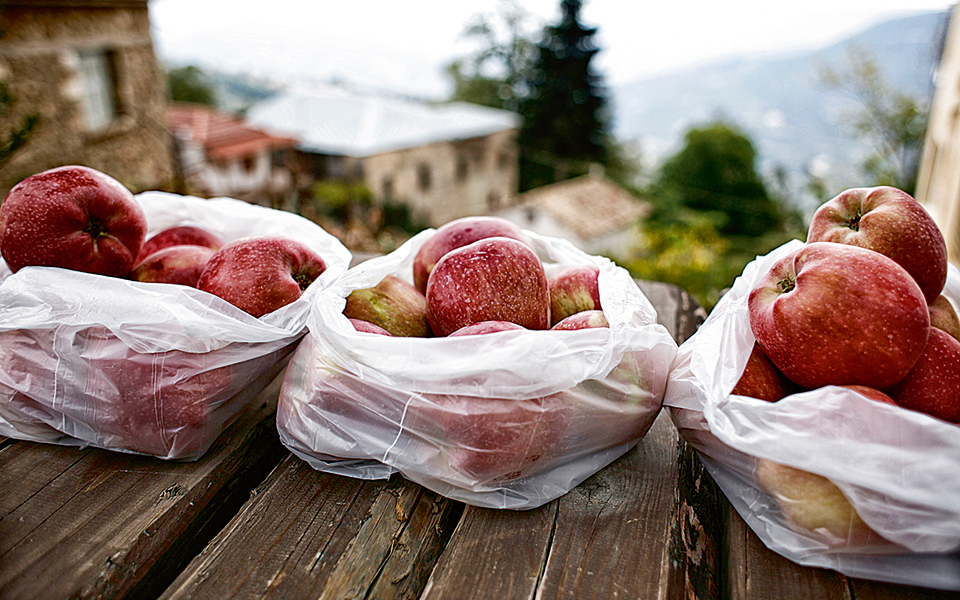
© Nikos Kokkas
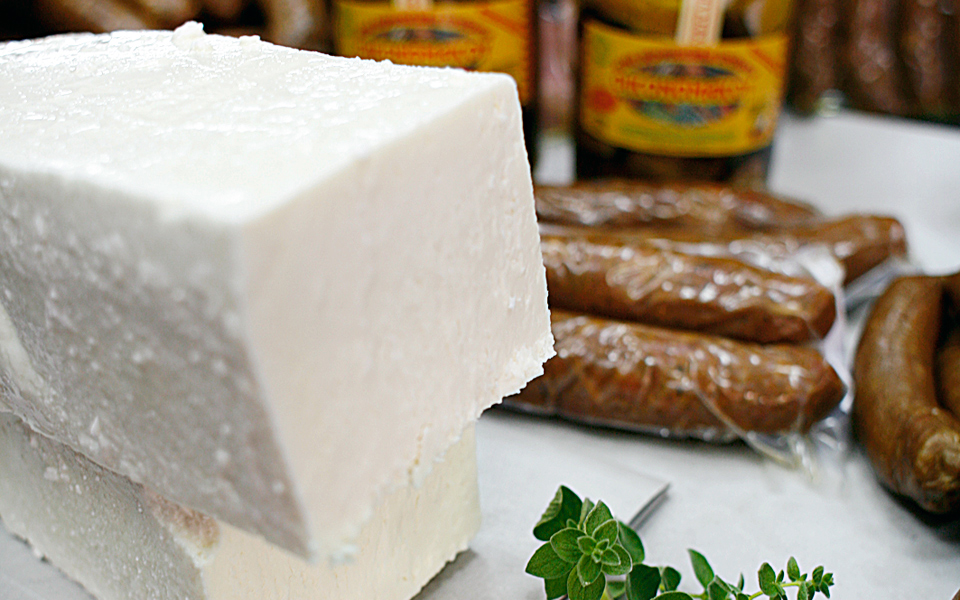
© Nikos Kokkas
KALAMATA OLIVES
Claim to Fame
A staple of agricultural production since at least 3600 BC, olives and olive oil continue to be the main source of income for farmers in the broader Kalamata region. A star among Greek PDO products, the Kalamata olive is known around the world not just for its distinctive flavor but also its high nutritional value. Produced from the Koroneiki variety, these olives are a large oval shape, crunchy and brownish-purple in color, with a tart bite. They also stand out for the way they are prepared, which has remained unchanged for centuries. The traditional “Greek way” is to collect the bitter fruit from the tree and cure it in brine for at least three months. Though a lengthy process, it is the only way to ensure that the fruit does not lose any of its nutritional qualities. In other countries, olives are cured in caustic soda, which is a much faster way to make them edible, but also destroys much of their goodness along the way. One way to tell how olives have been cured is from the color of the flesh: if they have a darker band around the outer part, they have been soaked in caustic soda; if their color is uniform, they have been cured in the traditional manner. While all olives are a good source of calcium and vitamins A, C, E and K, Kalamata olives also provide magnesium, phosphorus, potassium and B vitamins.
“ The Kalamata olive is known around the world not just for its distinctive flavor but also its high nutritional value. ”
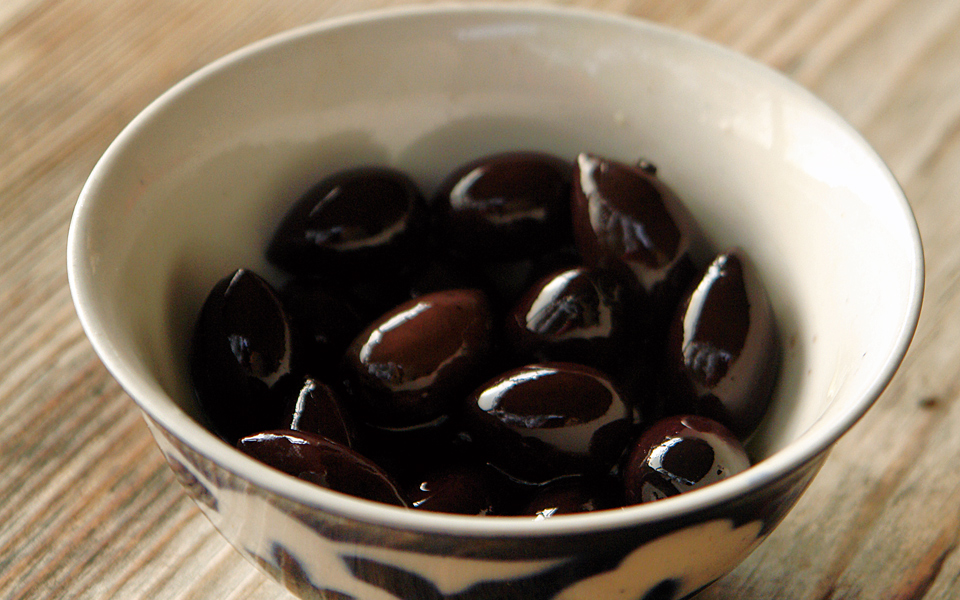
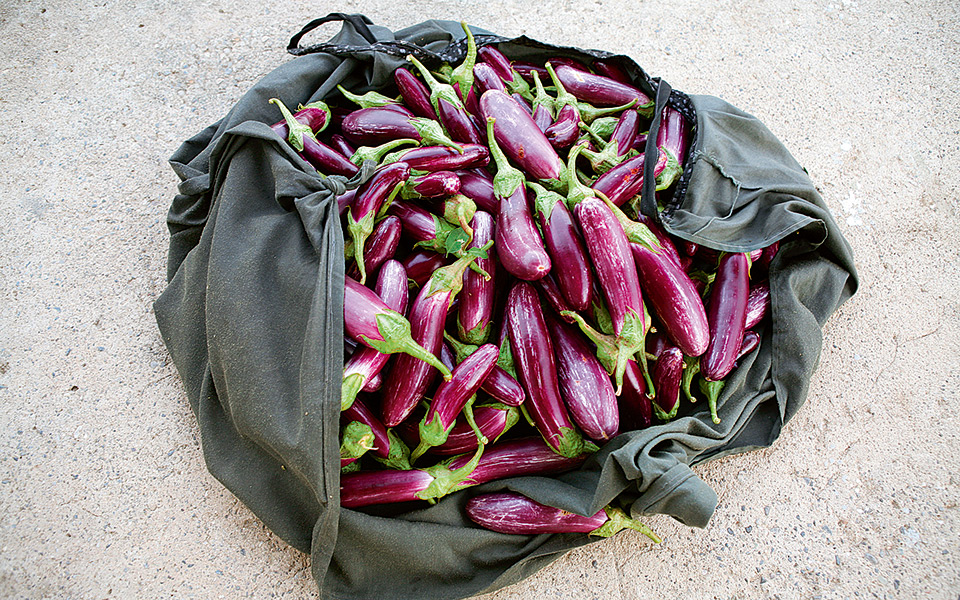
© Effie Paroutsa
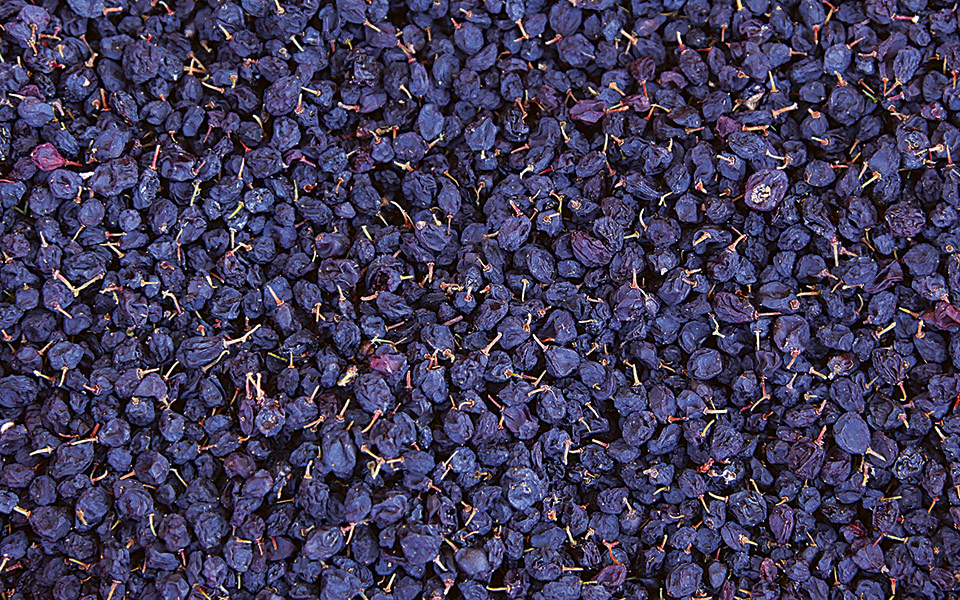
© Akis Orfanidis
TSAKONIKI EGGPLANT
One of a Kind
Eggplants are grown all over Greece, but only those cultivated in the mountains of Tsakonia are entitled to the PDO certification. Long, shiny and light-purple with white stripes, not as bitter as regular eggplants, their flavor is quite unmistakable. They are also extremely nutritious as they are rich in vitamins (B complex especially), copper, manganese, potassium, folic acid and fiber. Remarkably versatile, they can be cooked in myriad ways, although they can be hard to come by, even in the Peloponnese. Here is an interesting recipe for you to make and enjoy.
CORINTHIAN CURRANT
Queen of the North
The small, dark, seedless grapes of Vitis Vinifera L. variety are used to make the renowned Corinthian raisins, a commodity that comprised 75 percent of Greece’s total exports in the 19th century. Today, annual production comes to around 30,000 tons, 95 percent of which is exported. Sun-dried raisins are sweet and almost caramel-like in flavor, while those dried in the shade are slightly tarter and retain more of the grape’s natural flavor. Raisins are rich in antioxidants, provide a great energy boost thanks to their fructose and help control cholesterol and blood pressure.

